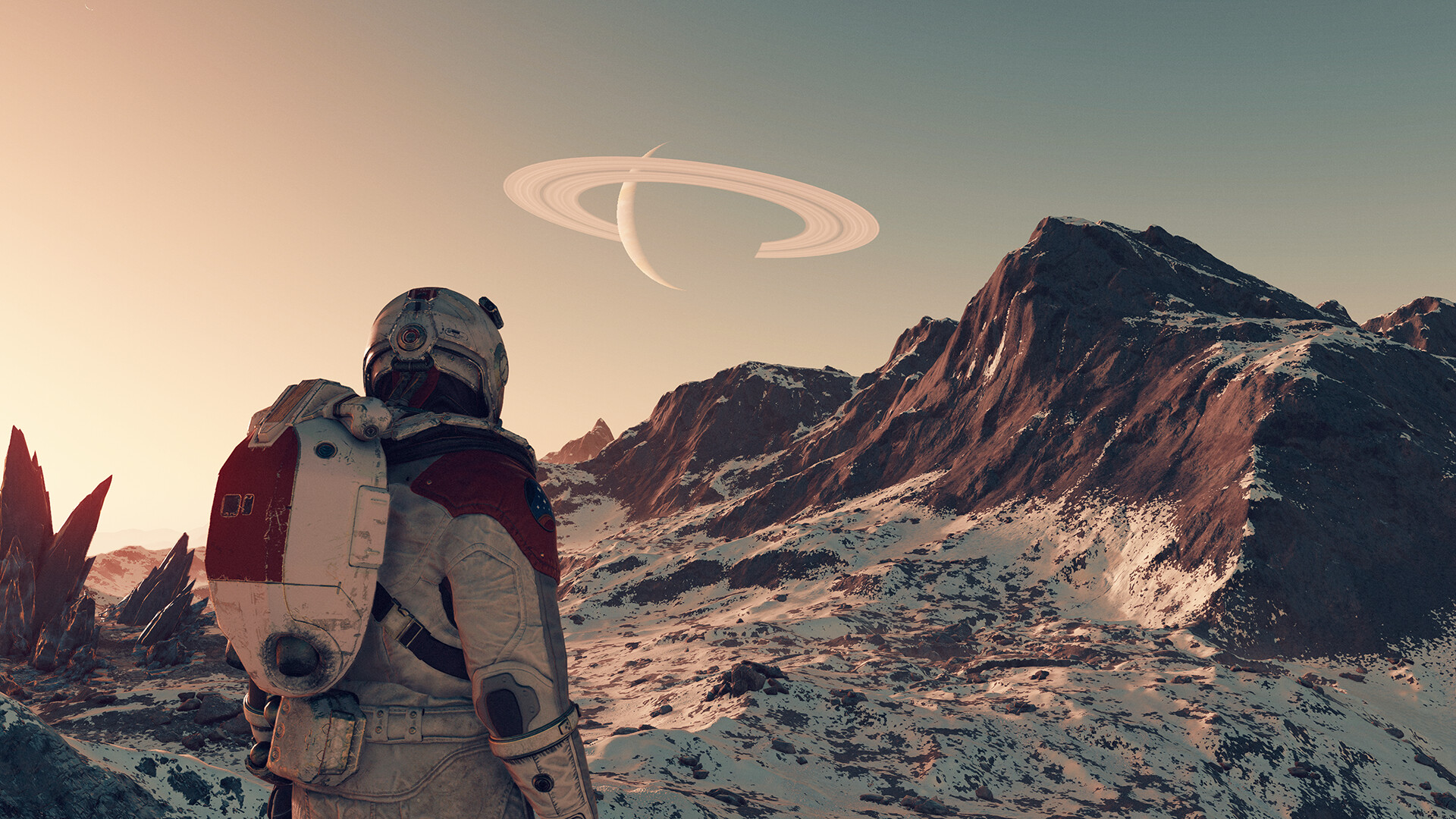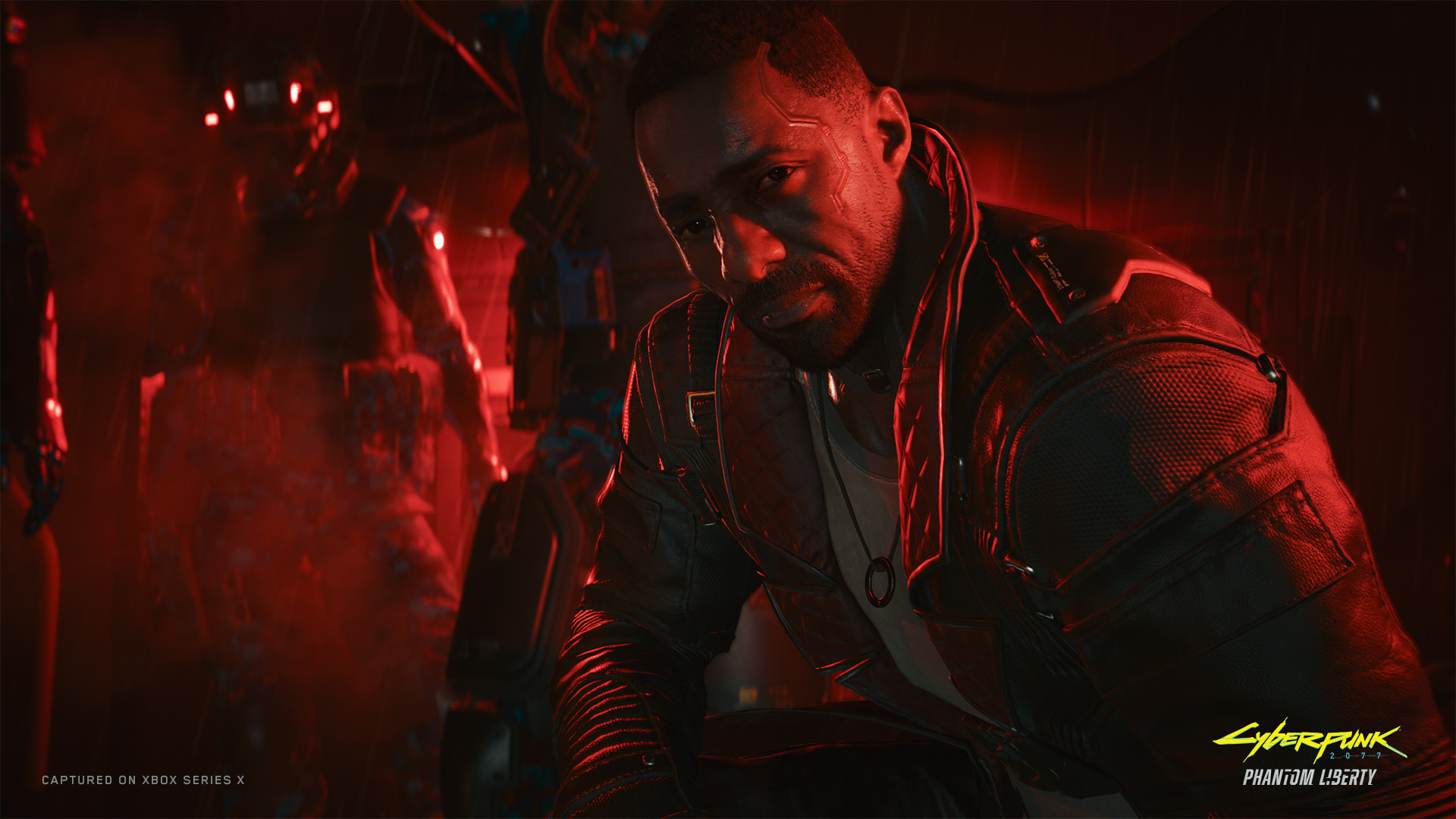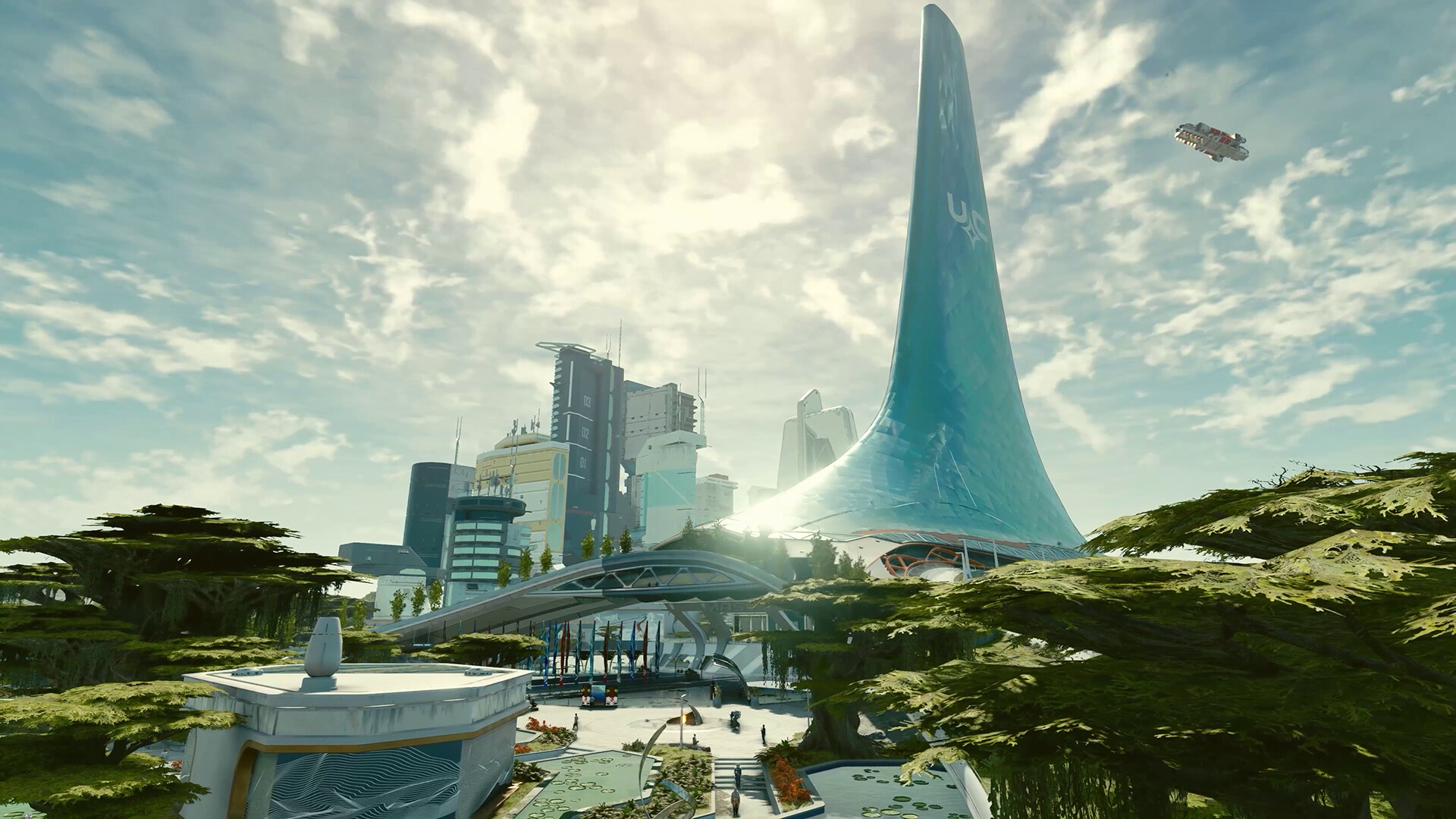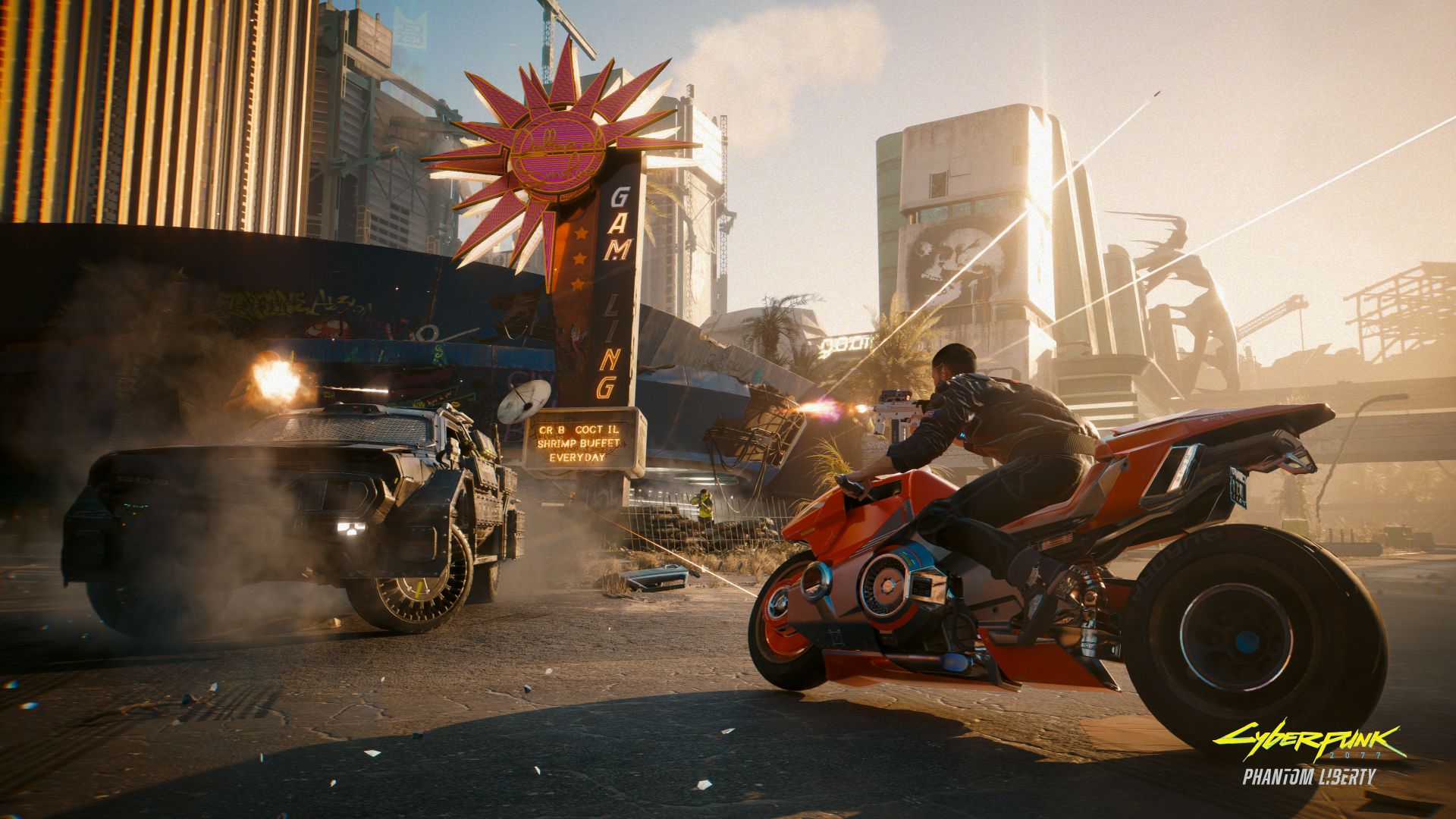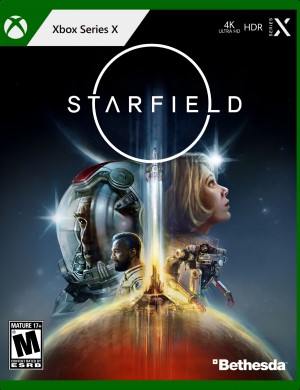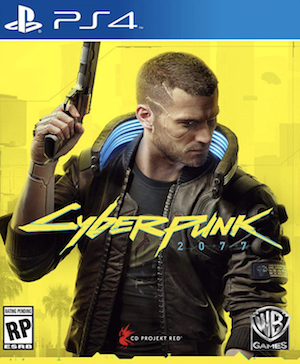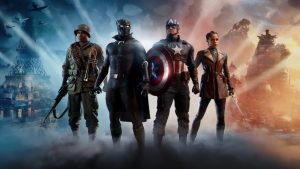
Cyberpunk 2077 and Starfield are obviously going for two very different kinds of experiences, with the former being much more cinematic and narrative-driven, and the latter being more focused on its systems-driven sandbox. But as massive first-person RPGs set in futuristic open world settings, they also have plenty in common, to the point where it’s quite easy to make comparisons between the two, especially at a time when both of them are so heavily in the zeitgeist.
There’s a whole lot to love about Starfield, and though Cyberpunk 2077 had a rough couple of years after launch, at this point, after Update 2.0 and Phantom Liberty there’s plenty to love about it as well- but when the two are pit against each other, which one comes out on top? Here, we’re going to try and answer that question, as we compare the Bethesda and CD Projekt RED RPGs across multiple categories.
OPEN WORLD
Right out the gate, it’s important to stress once again that the open worlds of Starfield and Cyberpunk 2077 are going for very different things. Starfield, like any other Bethesda Game Studios RPG treats its open world as a massive sandbox where players are left alone to engage with its web of systems and bevy of content with an incredible degree of freedom, while Cyberpunk 2077, much like The Witcher 3’s open world, is, first and foremost, in service to the story, and though it also has no shortage of things to do and places to explore, its utmost priority is to further enrich the narrative and immerse players in the game’s setting.
Obviously, personal preference comes into play here, though through sheer brute force, Starfield does have a leg up in this area. The open world of Settled Systems is brimming with an incredible amount of variety in things to do and see, while, thanks to its systemic nature, it also feels like a much more reactive and dynamic playground. Then again, Cyberpunk 2077 has the very distinct advantage of being a single, seamless map. Where Starfield is broken up into a multitude of smaller pieces that have been stitched together with loading screens, Cyberpunk is a single, contiguous experience, which makes it quite a bit more immersive.
STORY
It’s hard not to go with Cyberpunk 2077 here, because just as Starfield’s sandbox approach gives it an edge in the open world department, so, too, do Cyberpunk’s narrative priorities push it over the top where the story is concerned. Starfield’s main story is, to be fair, a solid experience in its own right, and certainly comes across as a notable improvement over the storytelling in most past BGS RPGs- but Cyberpunk is on another level, especially if it’s Phantom Liberty you’re talking about. From the writing to the characters to the performances of the actors portraying them, CDPR’s futuristic RPG has just too much going for it in the storytelling department that Starfield does not.
COMBAT
Credit where credit is due- Starfield’s combat is way better than what most people would have expected prior to its release. Combat isn’t something BGS has been too good at – FPS combat in particular – but the shooting in Starfield is genuinely fun. The guns feel great to shoot, the powers that you acquire later on in the game add an interesting wrinkle, the space combat can be fun in short bursts, and things such as zero-g and extraterrestrial enemies further improve the experience as well.
That said, Cyberpunk 2077 probably takes the cake in this area. That most likely wouldn’t have been true until not too long ago, because prior to Update 2.0, the excellent weapons and combat mechanics of the game were often let down by its horrendous AI. In its current form, however, CDPR’s action RPG has a knack for consistently delivering thrilling, adrenaline fueled shootouts that are far more kinetic, explosive, and glorious than any combat encounter you’ll be part of in all of Starfield.
RPG SYSTEMS
In this area, both games are on pretty equal footing, especially now, after Cyberpunk 2077’s Update 2.0 overhaul. Both games boast impressive build variety and have their skill trees packed full of a bevy of rewarding unlocks that help shape and bolster your gameplay experience in various ways. That’s been Bethesda Game Studios’ bread and butter for as long as the studio has been around, so Starfield excelling in this area isn’t a massive surprise. In fact, until not too long ago, it probably would have wiped the floor with Cyberpunk 2077 in this department, though CDPR’s RPG has made significant overhauls to many of its underlying progression and customization mechanics, which have improved things in a much more radical way than most would have ever imagined.
CHOICE AND CONSEQUENCE MECHANICS
Much like the open world comparison, comparing Cyberpunk 2077 and Starfield’s choice and consequence mechanics comes with the caveat that both games are trying to deliver very different experiences. If what you want is absolute freedom and an extreme emphasis on player agency, Starfield is almost a dream game. The entire galaxy is open to you almost right from the get go, and the game places next to no restrictions on you in terms of where you go, what you do, and how you do it. That has always been the BGS way, and Cyberpunk 2077, by virtue of being as tied to its narrative vision as it is, cannot replicate that feeling of absolute freedom.
If, however, you’re looking for a game where your choices have weight, Starfield doesn’t hold a candle to Cyberpunk. Like all BGS RPGs, Starfield is not the sort of game that will lock you out of crucial content based on your past actions and decisions, and while that has incredible value in an open world sandbox, it’s also very much not what you want if what you’re looking for a game where you shape the story in a tangible, meaningful way through your choices. Cyberpunk 2077 may not be on the same level as something like The Witcher 3 in that regard, but there’s still plenty to be impressed by where its choice and consequence mechanics are concerned.
OPTIONAL CONTENT
Here, it’s kind of a clean sweep for Starfield. Cyberpunk 2077 is not exactly a slouch in this area, offering a healthy amount of side content across its base game and expansion, which includes a number of genuinely good side quests and gigs (even if it never comes close to touching the heights of The Witcher 3’s side quests). But side content is Starfield’s headlining act, and it’s clearly what the game puts the vast amount of its energy into. There are multiple faction questlines to experience, the majority of which are excellent, as well as a cavalcade of smaller, one-off side quests, not to mention other, fully fleshed-out side activities like ship building, outpost building, planet surveying, and much more. It’s a game that’s specifically been designed to keep serving up an endless well of side content to players, and it accomplishes that goal with great aplomb.
TECH
Cyberpunk 2077 was not exactly the poster child of technically impressive games back when it first launched, but from those disastrous beginnings, it has grown and improved with each update, to the point where it’s now a genuine visual and technical showpiece. In fact, it’s fair to say that a comparison with Starfield in this particular department is almost unfair. Bethesda’s RPG is running on decidedly aged tech, which shows in more ways than one, from the action frequently being broken up by loading transitions, the facial and character animations looking lackluster, and more. Cyberpunk 2077 obviously still isn’t a completely spotless game in the technical department, but it’s the clear winner in this category.
SO WHICH ONE COMES OUT ON TOP?
Again, personal preference has a massive role to play here, because where Cyberpunk 2077 is heads and shoulders above Starfield for those looking for a narrative-driven experience with high production values, the opposite is true if what you’re looking for is a systems-driven sandbox where player agency is the single most important thing.
That aside, on paper, it can be argued that Cyberpunk 2077 is in a better place than Starfield– though that, too, comes with some important qualifications, the most significant one being the fact that the former has three years’ worth of improvements and upgrades under its belt. Where Starfield will be three years from now remains to be seen, especially with Bethesda Game Studios promising meaty and consistent support for the space-faring RPG. It’s safe to say, however, that it has started off in a significantly better position than Cyberpunk 2077 found itself in at launch- now it’s up to Bethesda to make sure that it doesn’t let that initial momentum go to waste.








